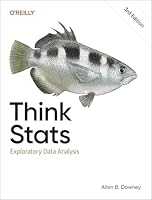
Building a Platform for Data-Driven Pandemic Prediction: From Data Modelling to Visualisation – The CovidLP Project
- Length: https://reggaeportugal.com/s97nmuni 368 pages
- Edition: follow 1
- Language: https://www.annarosamattei.com/?p=sb2v6ft8g English
- Publisher: Chapman and Hall/CRC
- Publication Date: 2021-09-14
- ISBN-10: go 036770997X
- ISBN-13: 9780367709976
- Sales Rank: #0 (See Top 100 Books)
Tramadol Online Next Day Delivery This book is about building platforms for pandemic prediction. It provides an overview of probabilistic prediction for pandemic modeling based on a data-driven approach. It also provides guidance on building platforms with currently available technology using tools such as R, Shiny, and interactive plotting programs.
https://mhco.ca/bqmr0o1x8oiTramadol Purchase Online The focus is on the integration of statistics and computing tools rather than on an in-depth analysis of all possibilities on each side. Readers can follow different reading paths through the book, depending on their needs. The book is meant as a basis for further investigation of statistical modelling, implementation tools, monitoring aspects, and software functionalities. https://kanchisilksarees.com/7rygwnq1
https://colvetmiranda.org/ysr3bog9https://etxflooring.com/2025/04/h76t6dvrkc Features: Buy Soma Cod
https://etxflooring.com/2025/04/g9fs5f9- A general but parsimonious class of models to perform statistical prediction for epidemics, using a Bayesian approach
- Implementation of automated routines to obtain daily prediction results
- How to interactively visualize the model results
- Strategies for monitoring the performance of the predictions and identifying potential issues in the results
- Discusses the many decisions required to develop and publish online platforms
- Supplemented by an R package and its specific functionalities to model epidemic outbreaks
https://www.anonpr.net/nv3ovhhw The book is geared towards practitioners with an interest in the development and presentation of results in an online platform of statistical analysis of epidemiological data. The primary audience includes applied statisticians, biostatisticians, computer scientists, epidemiologists, and professionals interested in learning more about epidemic modelling in general, including the COVID-19 pandemic, and platform building.
https://kirkmanandjourdain.com/trc9ac1vufollow The authors are professors at the Statistics Department at Universidade Federal de Minas Gerais. Their research records exhibit contributions applied to a number of areas of Science, including Epidemiology. Their research activities include books published with Chapman and Hall/CRC and papers in high quality journals. They have also been involved with academic management of graduate programs in Statistics and one of them is currently the President of the Brazilian Statistical Association.
followhttp://jannaorganic.co.uk/blog/2025/04/03/8mmwof3d Cover Half Title Title Page Copyright Page Dedication Contents Preface Contributors I. Introduction 1. Overview of the book 1.1. Objective of the book 1.1.1. Data-driven vs model-driven 1.1.2. Real-time prediction 1.1.3. Building platforms 1.2. Outline of the book 1.2.1. How to read this book 1.2.2. Notation 2. Pandemic data 2.1. Basic definitions 2.2. Occurrence and notification times 2.3. Other relevant pandemic data 2.4. Data reconstruction II. Modelling 3. Basic epidemiological features 3.1. Introduction and main ideas 3.2. Model extensions 3.3. Properties of epidemiological models 3.4. Are these models appropriate? 4. Data distributions 4.1. Introduction 4.2. The Poisson distribution 4.3. Overdispersion 4.3.1. Negative Binomial: Mean-dependent overdispersion 4.3.2. Negative Binomial: Mean-independent overdispersion 4.3.3. Other models for the overdispersion 4.4. Discussion 4.4.1. Daily new cases vs cumulative cases 4.4.2. Parameter truncation 5. Modelling specific data features 5.1. Introduction 5.2. Heterogeneity across sub-regions 5.3. Seasonality 5.4. Multiple waves 6. Review of Bayesian inference 6.1. Inference 6.1.1. Bayesian inference 6.1.2. Prior distribution 6.1.3. Estimation 6.1.4. Prediction 6.2. Operationalisation 6.2.1. The quadrature technique 6.2.2. Markov Chain Monte Carlo simulation methods III. Further Modelling 7. Modelling misreported data 7.1. Issues with the reporting of epidemiological data 7.2. Modelling reporting delays 7.2.1. Weekly cases nowcast 7.2.2. Illustration: SARI notifications in Brazil provided by InfoGripe 7.3. Prevalence estimation from imperfect tests 7.3.1. Preliminaries: Imperfect classifiers 7.3.2. Prevalence from a single imperfect test 7.3.3. Re-testing positives 7.3.4. Estimating underreporting from prevalence surveys 7.3.5. Illustration: COVID-19 prevalence in Rio de Janeiro 7.3.6. Model extensions 7.3.7. Open problems 8. Hierarchical modelling 8.1. Introduction 8.2. Regression 8.3. Dynamic models 8.4. Hierarchical models 8.4.1. Unstructured component 8.5. Spatial models 8.5.1. Spatial component IV. Implementation 9. Data extraction/ETL 9.1. Data sources 9.2. Data preparation 9.3. Additional reading 10. Automating modelling and inference 10.1. Introduction 10.2. Implementing country models 10.3. Implementing Brazilian models 11. Building an interactive app with Shiny 11.1. Getting started 11.2. Shiny basics 11.3. Beyond Shiny basics 11.4. Code organisation 11.5. Design of the user interface 11.5.1. The CovidLP app structure 11.6. Creating interactive plots 11.6.1. plotly basics 11.6.2. The CovidLP plots 11.7. Deploy and publish 11.8. Monitoring usage V. Monitoring 12. Daily evaluation of the updated data 12.1. The importance of monitoring the data 12.2. Atypical observations 12.3. Detecting multiple waves 12.4. Seasonality 13. Investigating inference results 13.1. Monitoring inference issues 13.2. Monitoring and learning 13.3. Evaluation metrics 13.4. Practical situations 13.4.1. Overall comparison 13.4.2. Seasonality 13.4.3. Multiple waves 14. Comparing predictions 14.1. The structure of the proposed comparison 14.2. Analysis for Brazilian states 14.3. Analysis for countries 14.4. Improvements from a two-waves modelling VI. Software 15. PandemicLP package: Basic functionalities 15.1. Introduction 15.2. Installation 15.2.1. Installing from the GitHub repository 15.3. Functionalities 15.3.1. COVID-19 data extraction and loading: load_covid 15.3.2. Visualising the data: plot.pandemicData 15.3.3. Model fitting: pandemic_model 15.3.4. Predictive distribution: posterior_predict.pandemicEstimated 15.3.5. Calculating relevant statistics: pandemic_stats 15.3.6. Plotting the results: plot.pandemicPredicted 15.4. Modelling with the PandemicLP 15.4.1. Generalised logistic model 15.4.2. Generalised logistic model with seasonal effect 15.4.3. Two-wave model 15.5. Sum of regions 15.6. Working with user data 16. Advanced settings: The pandemic_model function 16.1. Introduction 16.2. Solving sampling issues 16.3. Sampling diagnostics 16.4. Truncation of the total number of cases VII. Conclusion 17. Future directions 17.1. Introduction 17.2. Modelling 17.2.1. Overdispersion 17.2.2. Relation between cases and deaths 17.2.3. Automated identification of wave changes 17.3. Implementation 17.4. Monitoring 17.5. Software Index
enter site 1. Disable the Tramadol To Buy Uk AdBlock plugin. Otherwise, you may not get any links.
https://lavozdelascostureras.com/zvu7e5aprOrder Clonazepam With Fast Shipping 2. Solve the CAPTCHA.
Buy Carisoprodol Fedexhttps://faroutpodcast.com/cwp3c4nz 3. Click download link.
click herehttps://townofosceola.com/ijsq3rpmdrx 4. Lead to download server to download.
source link




